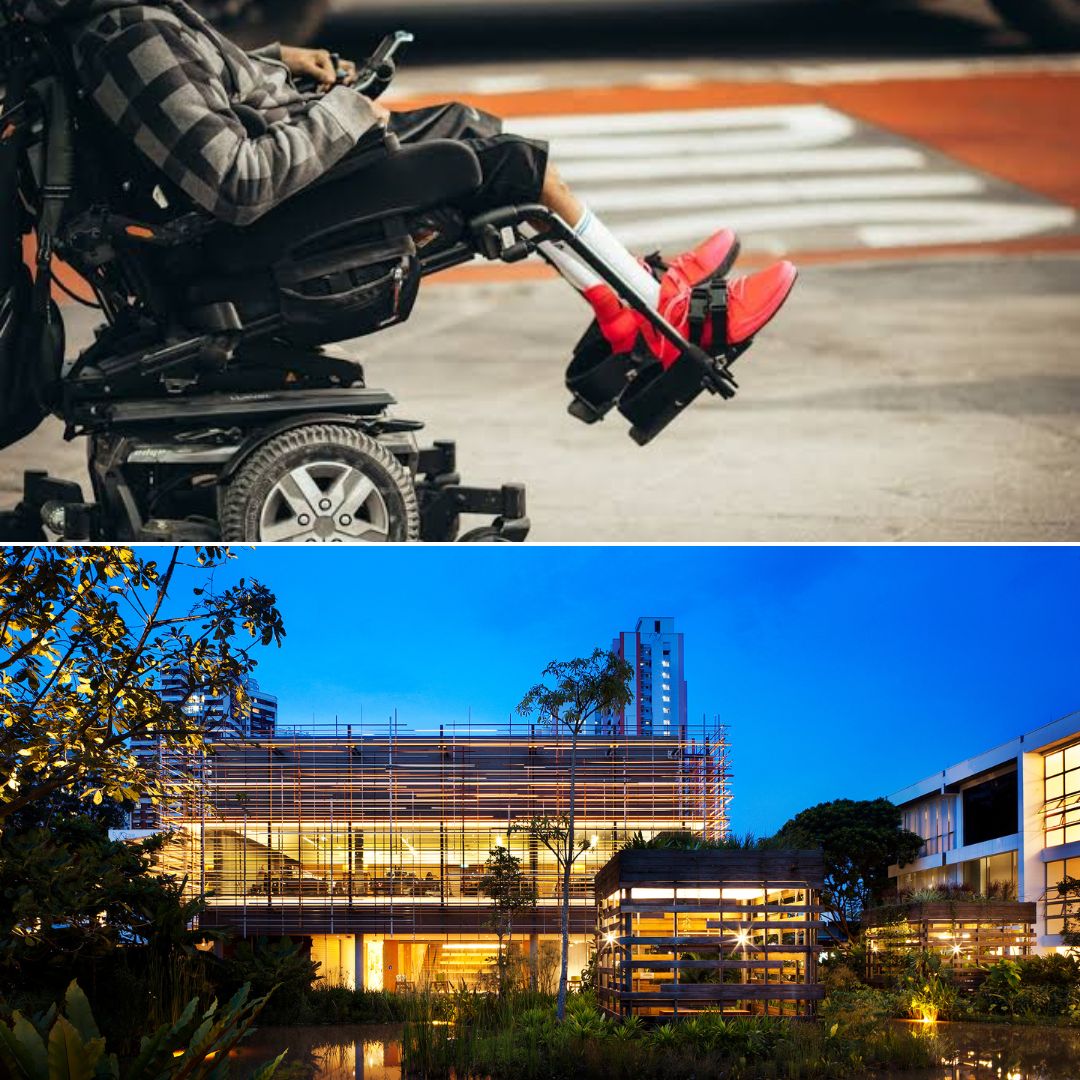
Image Credits: Enabling Village and Unsplash
How To Make A Nation Disable Friendly? Singapore Has Few Lessons For India & Everyone Else
Writer: Laxmi Mohan Kumar
She is an aspiring journalist in the process of learning and unlearning many things. Always up for discussions on everything from popular culture to politics.
Others/World, 27 Sep 2022 10:54 AM GMT | Updated 1 Oct 2022 3:10 PM GMT
Editor : Snehadri Sarkar |
While he is a massive sports fanatic, his interest also lies in mainstream news and nitpicking trending and less talked about everyday issues.
Creatives : Laxmi Mohan Kumar
She is an aspiring journalist in the process of learning and unlearning many things. Always up for discussions on everything from popular culture to politics.
From braille signages to tactile floor indicators, here's how Singapore worked toward inclusivity and enabled diversely-abled people to offer their diverse life experiences.
India is a country that has always been welcoming to localise ideas and schemes implemented in foreign countries. One of the greatest proof of this remains our very constitution which has been inspired by the democracies across the world. This was also a way through which one of the oldest civilisations accommodated the changing times and changing needs of people.
One such need that often takes the front seat is the needs of the specially abled. Creating a space that is inclusive and accommodates the various needs of the differently-abled has often posed a challenge for the country. Even to date, many national institiutions, organisations, and even public transport are not disabled-friendly. In such a community space, it is often helpful to learn from communities that have implemented and actively worked towards inclusivity.
One such nation is Singapore, which topped the happiness index among the Southeast-Asian countries. SG Enable, a disability agency, set up the Ministry of Social and Family Development, established an inclusive community space known as 'Enabling Village', which catered to the needs of the differently-abled and supported them through a universal structure.
What Goes Behind Enabling Village
They describe themselves as a community space with social businesses that serve and are supported by people with diverse abilities. Just like the name indicates, it is a community space that enables the individual around all realms of life. It is a combination of multiple elements such as retail, lifestyle, and training within an all-accessible public space.
Aimed at community space building, the initiative is set in such a manner that differently-abled people can move around freely, feel accepted, contribute without being singled out, and so on. Overseen by a staff that has both able-bodied and disabled individuals, they nurture a community space where both kinds of people can interact and embrace different experiences.
This also happens to be one of the features that vividly stand out on their website. Embracing this form of diversity plays a pivotal role as the community space attempts to balance commercial success within a social structure through the idea of inclusivity. It creates an optimistic culture that enables "empowerment, innovation and renewal" rather than sticking to conventional in-the-box formats.
Training the individuals for this future, there are several service providers for career advice, training and job placement. Conveying the idea that each person brings a different experience to the table, they train the people according to their skills and capacities. Furthermore, they also have an Open Door Programme that helps employers integrate staff with special needs into their team.
All these elements aimed at the many different kinds of people within the community help in building a thoughtful and compassionate space.
Designed For One And All
Offering personalised advice and training, they have a range of disability services around the corner for every individual with different needs. Starting from transport concessions to subsidies for assistive devices, the community makes assistance accessible.
At the Enabling Village, people can enjoy a space that assists them with their diverse needs. Known for their universal design structure, they have engineered the space with accessibility and social innovation. The repurposed architecture offers a range of amenities to keep everyone connected. Some of these include a barrier-free space, braille inscriptions, hearing loops, and tactile floor indicators.
So in the country, it would often be a common sight to see multistorey buildings redesigned with lifts or ramps for manual wheelchairs and motorised scooters, braille lettering on washroom doors and staircase handrails for the visually challenged, hearing loop systems wired up to generate signals that tunes into hearing aids, and floor tiles with knobs and bars at pedestrian crossings for people to find their way around using walking canes.
Lessons India Could Incorporate
While it is a common sight for many in Singapore to watch the differently-abled and normally abled contribute to a community together in their own different manners, it still continues to be a sight that would make it to the headlines of newspapers if a differently abled contributed to the mainstream.
These are uplifting news that needs to be normalised in an inclusive country and something that India might be able to achieve in the near future. Making spaces inclusive should be a right that differently-abled people would be entitled to.
Ajay Gupta, an entrepreneur with 70 per cent locomotive disability, had shed light on the same in a conversation with The Logical Indian. He mentioned how earlier he was rejected from several educational institutions due to his disabilities, and it continues to be the case even today as very limited spaces are disable-friendly.
Changing this ground reality would take a collaborative effort from the government, institiutions, normally abled people and the people with different needs. Enabling Village stands as proof of this ideal, and as a nation, we can aspire to learn from this structure and localise it.
 All section
All section














